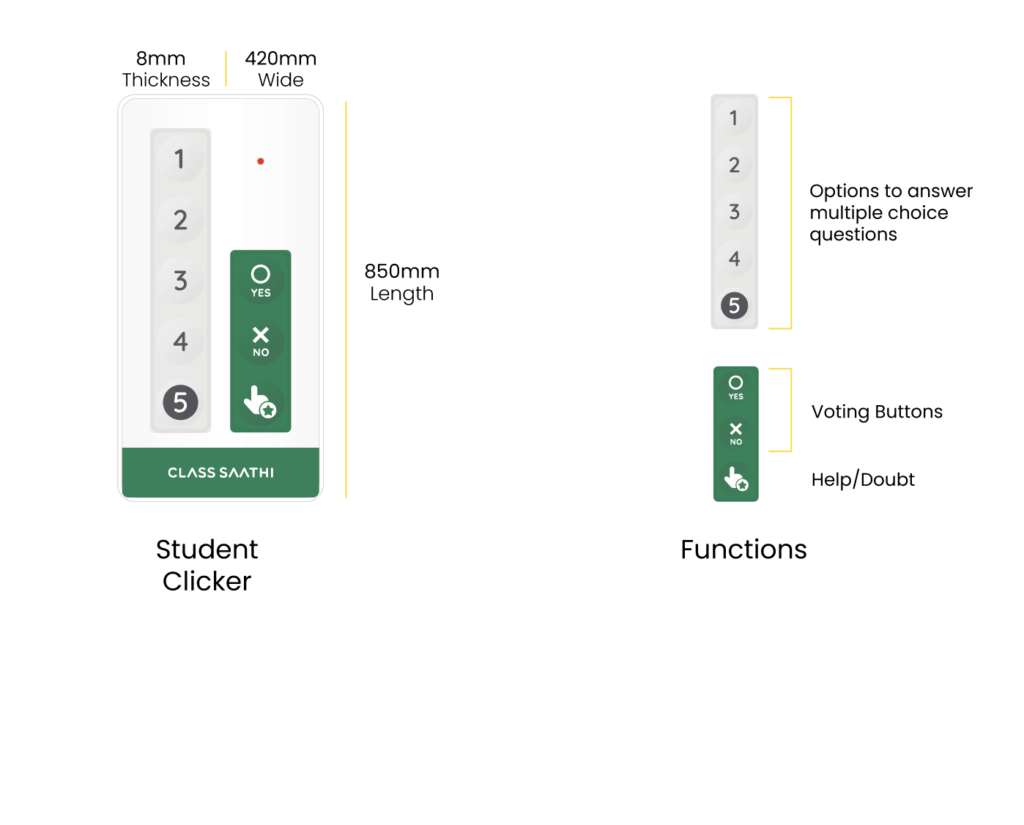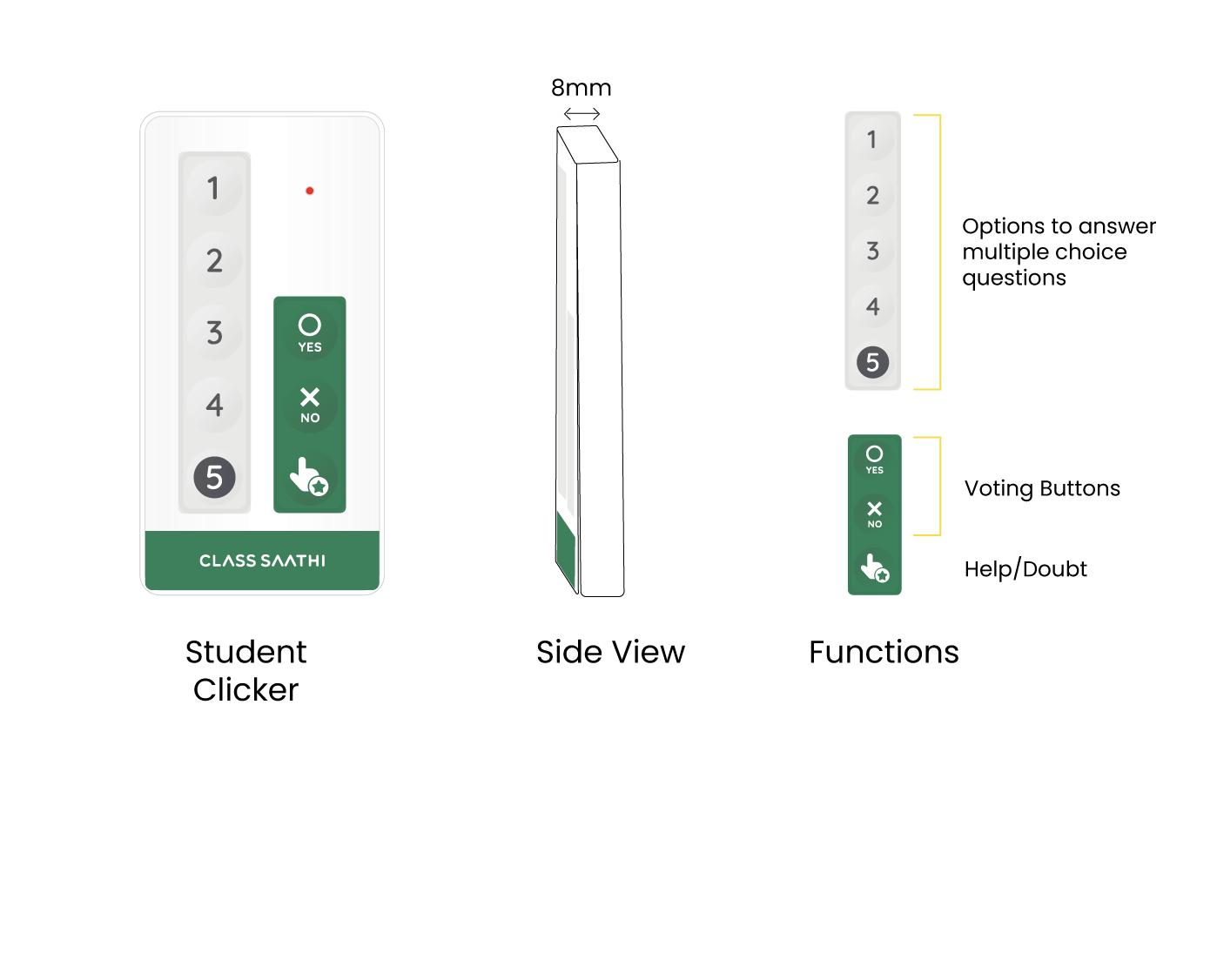In today's rapidly evolving educational landscape, technology plays a pivotal role in shaping the way students learn and teachers instruct. One such technological innovation that has revolutionized classrooms across the globe is the humble "school clicker." In this comprehensive guide, we will explore the world of school clickers, their impact on education, and how they can contribute to a more engaging and interactive learning environment.
What Are School Clickers?
School clickers, also known as student response systems or classroom clickers, are handheld devices or software applications that enable students to respond to questions or polls posed by instructors during a lesson. These responses are then collected and displayed in real-time, providing valuable insights into student comprehension and participation. The primary purpose of school clickers is to promote active learning, encourage class participation, and foster a deeper understanding of the subject matter.
The Evolution of School Clickers
School clickers have come a long way since their inception. Initially, they were simple handheld devices with basic functionality, allowing students to select predefined answer choices. However, with advancements in technology, modern school clickers have evolved into sophisticated tools with a wide range of features.

Today's school clickers can:
1. Offer Multiple Question Types: Instructors can create various question types, including multiple-choice, true/false, short answer, and even interactive quizzes and surveys.
2. Integrate with Presentation Software: Many school clickers seamlessly integrate with popular presentation software like PowerPoint, allowing for a seamless teaching experience.
3. Track Individual Progress: Instructors can monitor individual student progress and tailor their teaching methods to address specific needs.
4. Enhance Engagement: Gamification elements such as leaderboards and rewards can be incorporated to motivate students and boost engagement.
Advantages of Using School Clickers
1. Instant Feedback
One of the most significant advantages is the ability to provide instant feedback. Instructors can gauge whether students grasp the material immediately and adjust their teaching accordingly. This helps in identifying and addressing misconceptions promptly.
2. Increased Participation
They promote active participation by allowing every student to respond anonymously. This inclusivity encourages even the most reserved students to voice their opinions and answers, fostering a more inclusive classroom environment.
3. Data-Driven Insights
The data collected through them can be invaluable for instructors. It enables them to identify trends, understand which concepts students find challenging, and make data-driven decisions to improve their teaching methods.
4. Enhanced Engagement
Incorporating technology into the classroom, such as these, makes learning more interactive and engaging. Students often find these devices fun to use, which can lead to increased motivation to participate and learn.
Implementing School Clickers Effectively
To harness their full potential, instructors should follow these best practices:
1. Plan Questions Thoughtfully: Craft questions that encourage critical thinking and discussion rather than rote memorization.
2. Set Clear Expectations: Inform students about how and when clickers will be used in the classroom to avoid confusion.
3. Use Data Wisely: Regularly review the data collected by clickers to adjust your teaching methods and improve student outcomes.
4. Promote Collaboration: Encourage group discussions and peer learning by incorporating clicker questions that require students to work together.
5. Stay Inclusive: Ensure that all students have access to clickers and consider alternative methods for those who may not.

The Future of School Clickers
As technology continues to advance, the future of school clickers looks promising. We can expect to see:
1. Artificial Intelligence Integration: AI-powered clickers that can provide personalized recommendations to students based on their responses.
2. Virtual Reality and Augmented Reality: Incorporating VR and AR into clicker systems to create immersive learning experiences.
3. Enhanced Data Analytics: More sophisticated data analysis tools to provide deeper insights into student performance.
4. Global Accessibility: Wider adoption of clickers, especially in remote and underserved areas, to democratize education.
Last Thoughts
In conclusion, school clickers have emerged as a powerful tool for educators, enhancing the learning experience for students and improving teaching methods. Their evolution and integration into the classroom have made them indispensable in today's educational landscape. As technology continues to advance, the potential for school clickers to revolutionize education further is limitless.

